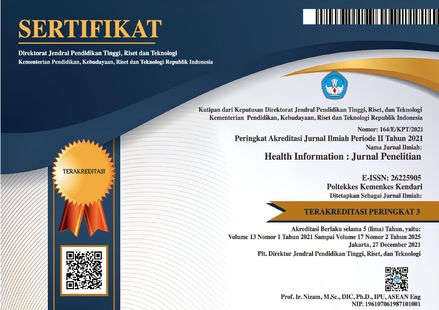Efektivitas Alternate Day Fasting Terhadap Profil Lipid Pada Pasien Non Alcoholic Fatty Liver Disease
Abstract
NAFLD is often associated with dyslipidemia (high triglycerides, low HDL, high VLDL) and increased levels of pro-inflammatory cytokines that are atherogenic and promote the development of cardiovascular disease. The potential beneficial effect of alternate-day fasting on dyslipidemia is controversial. Cholesterol, total direct HDL, LDL, and triglycerides have been shown to be reduced by fasting diets, but these effects were not statistically different from baseline. In the research of Cai et. al, 2019 found a decrease in triglyceride levels in the intervention group two times higher than the control group (± 1.9% vs ± 1%). Accumulating evidence suggests that >5% weight loss is required to increase plasma lipid concentrations and glucoregulatory factors, therefore the weight loss achieved by a control diet may not be large enough to have an effect on dyslipidemia. Findings in patients with ADF compared to the control group, there was a significant reduction in LDL levels. 1 However, there were no significant changes in all measured lipid parameters (total cholesterol, LDL, HDL, and TG) after 8 weeks MACR (Modified Alternate-day Calorie Restriction) protocol. This may be due to the short duration of the intervention and no defined exercise regimen. This study was conducted to review more deeply the role of alternate day fasting on lipid profiles in NAFLD patients. A literature search was carried out from journal articles with a period of 2013-2023 with databases in the form of Pubmed, Ebsco, Google Scholar, Science Direct, Medline, Cochrane, and Hindawi. Decreased liver enzymes can be explained by increased visceral fat and steatosis in the liver. On the other hand, paradoxical increases in liver enzymes have been observed after fasting, but the increases are minimal and reversible on repeated feedings. It is known from the literature that impaired autophagy in NAFLD and IF appears to promote hepatocyte recovery. However, it is known that recent studies have shown that PPARa activation from fasting promotes nuclear receptor co-repressor 1 (NCoR1) degradation and subsequent hepatic autophagy.
Downloads
Published
How to Cite
Issue
Section
Citation Check
License
Copyright (c) 2023 Cindy Damara, Tania Glennasius, Berliana Agata, Caroline Monika, Verren Natalie (Author)

This work is licensed under a Creative Commons Attribution-ShareAlike 4.0 International License.
Authors retain copyright and grant the journal right of first publication with the work simultaneously licensed under a Creative Commons Attribution-ShareAlike 4.0 International License that allows others to share the work with an acknowledgment of the works authorship and initial publication in this journal and able to enter into separate, additional contractual arrangements for the non-exclusive distribution of the journals published version of the work (e.g., post it to an institutional repository or publish it in a book).











